Knowing how to login to WordPress is one of the foundational steps in actually building your WordPress website. If you’re having issues logging into WordPress or can’t gain access using standard methods, you’ll learn some alternative approaches to accessing your WordPress login.
Below, you’ll learn how to log in to WordPress using a few different methods: via the standard WordPress.org login URL, using your WordPress hosting dashboard, and a few ways to troubleshoot any login issues.
Table of Contents
How to Find Your WordPress Login URL
When you sign up for WordPress hosting, or install WordPress on another host, your WordPress login pages and links will automatically be created. Usually, you’ll receive these in an email, or they’ll be available within your hosting dashboard.
If you can’t find your login link and WordPress is already installed, then simply try one of the URLs below to login to your website.
In the following URLs, all you need to do is replace the “example.com” with the URL for your website. All of the URLs will redirect to your login page.
- www.example.com/wp-admin
- www.example.com/wp-login.php
- www.example.com/login
- www.example.com/admin
Note that URLs “/admin” and “wp-admin” will go to the WordPress admin dashboard directly, so if you’re already logged in, then you’ll be taken directly to your WordPress dashboard without having to log in.
Finally, note that the URLs can differ depending on your WordPress install and your domain configuration.
For example, your domain could be without the “www,” or if your site is installed on a subdomain or subfolder, then your URL structure will look something like “blog.example.com/wp-admin” or “example.com/blog/wp-admin.”
Once you’ve found the correct URL combination, then you’ll be taken to the WordPress login screen that looks like the image below. If your login page is setup correctly, then multiple of the URL variations will take you to the same page.
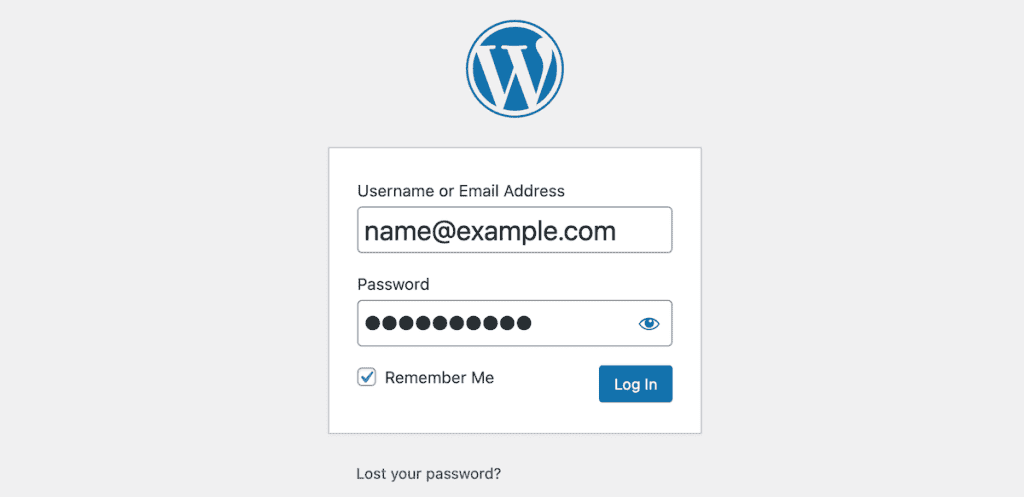
Then, all you need to do is enter your email address/username and password that were created when installing WordPress. If you don’t know these, you’ll learn how to troubleshoot this in the final section.
Remember Your Login Details
After you enter your username and password, it’s a good idea to click the “Remember Me” checkbox. This saves your login data in a cookie, so you won’t have to remember it in the future.
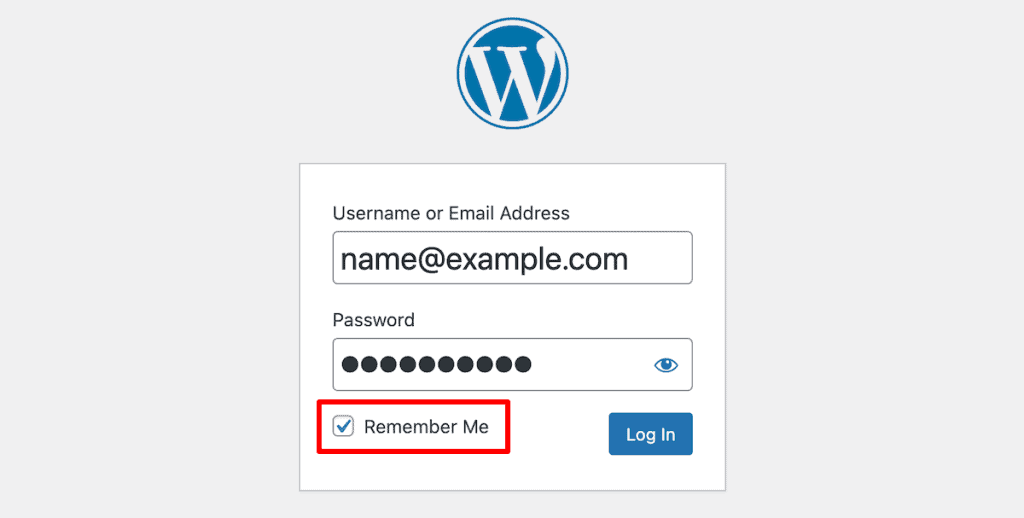
Alternatively, you can save your login credentials in your browser’s password manager so it will remember and autofill your login information when you access the page.
Now that you understand how to log in to WordPress using the standard login URL, let’s get into some alternative methods that allow you to skip the WordPress login page altogether.
How to Login from Your Hosting Dashboard
Depending on your hosting provider, you can log in directly to your WordPress site without having to go through the standard WordPress login page.
Below, you’ll learn how to do it using cPanel, which is the control panel software that’s used across all SupportHost hosting plans.
There are two main approaches you can take:
1. Login via WP Toolkit
The first thing you’ll need to do is log into cPanel and then click on “WordPress Management” from the left-hand sidebar, or click on the app in the “Domains” section of your dashboard. This gives you a list of WordPress websites. Simply click on your site to expand the section.

Then, click the “Login” button that appears. If you installed WordPress via WP Toolkit, then you won’t need to enter additional information. But, if you installed WordPress manually, then you’ll need to enter site information, or regenerate your password, before you’re allowed to log in.
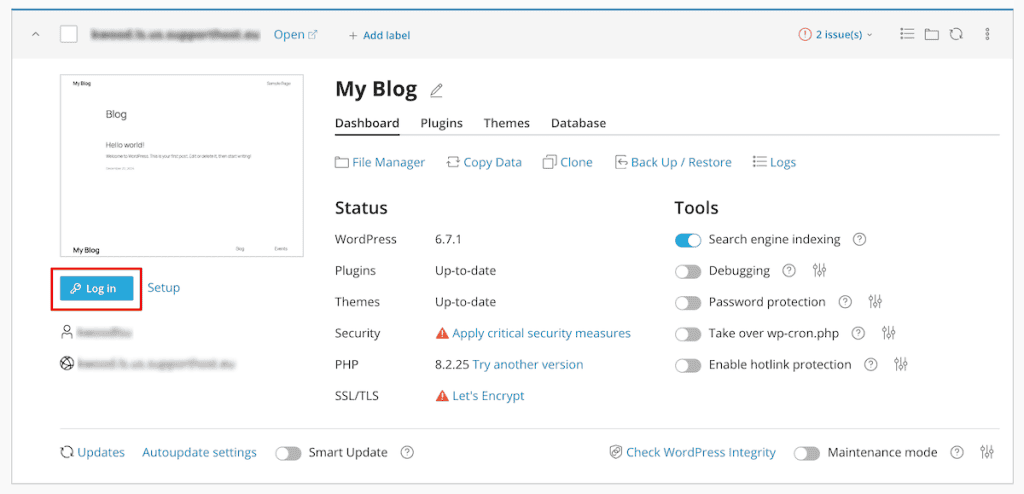
2. Login via Softaculous
The second approach is using the Softaculous app. Login to cPanel and click on the “WordPress Manager by Softaculous” in the sidebar. If you can’t find it, then search for “Softaculous” or locate it in the “Software” section.

Click on the application, and it will bring up a list of detected WordPress installations. If you installed WordPress manually, then they might not show up, so you’ll need to click the “Scan” button to bring up a list of active WordPress installations.
Once your WordPress sites show up, then all you need to do is click the “Login” button and you’ll be taken directly to your WordPress dashboard.

Troubleshooting Common WordPress Login Issues
If you’ve made it this far, then you’ve probably already logged into your WordPress site. However, if you still can’t log in, then there might be a few obstacles in your way. We’ll highlight the three most common problems stopping you from logging into WordPress and making changes to your WordPress site.
You Don’t Remember Your WordPress Password
First, you might have forgotten your password, and it’s not saved anywhere. Here, resetting your password is simple.
All you need to do is go to the WordPress login page and then click the “Lost your password?” link.
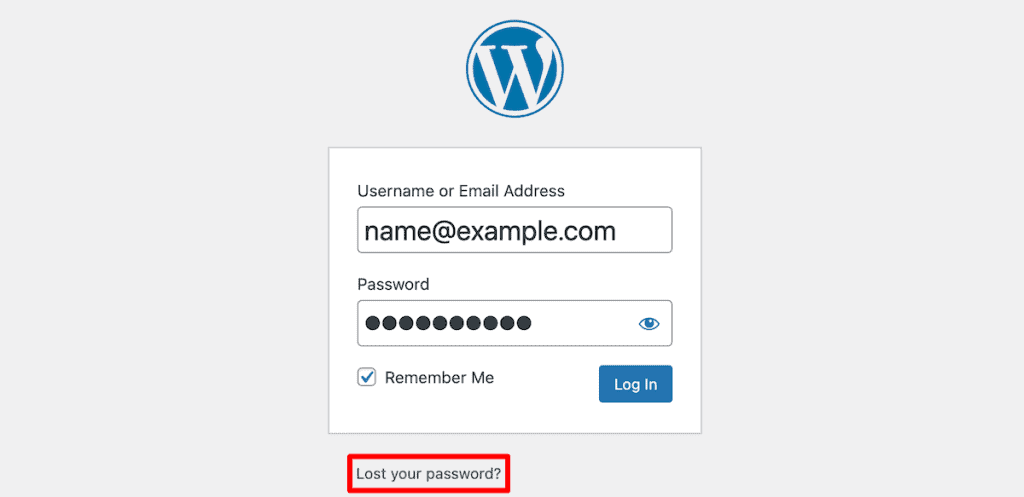
This brings up a form where you’ll need to enter your username or email that’s associated with your account. Then, if that email or username is associated with an account, it’ll send you an email where you can reset your password.
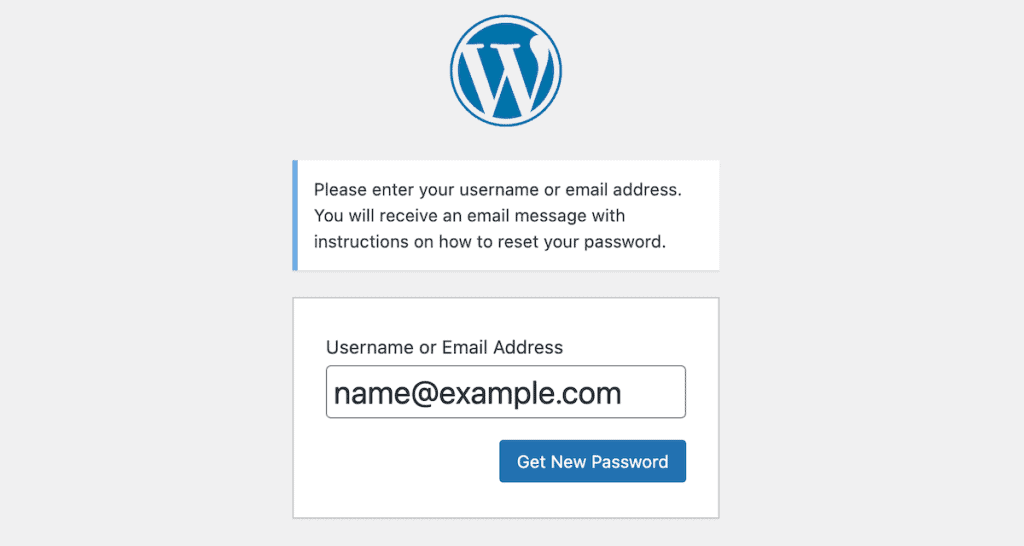
After you’ve reset your password make sure that you click the “Remember Me” checkbox or save your login credentials in your browser.
You Don’t Remember Your Username and Password
If you forgot both your username and password, you’ll need to access them manually. To do this, you’ll need to log into your hosting dashboard that’s powered by cPanel. You’ll also need to have installed WordPress with Softaculuous or WP Toolkit.
First, log in to cPanel and open up “phpMyAdmin“. If you can’t find it, search for it, or locate the app in your dashboard’s “Databases” section.

After that, you’ll need to open up the database that’s associated with your WordPress site, and then open up the “wp_users” table in that installation. Note the file prefix might look different than the image below.
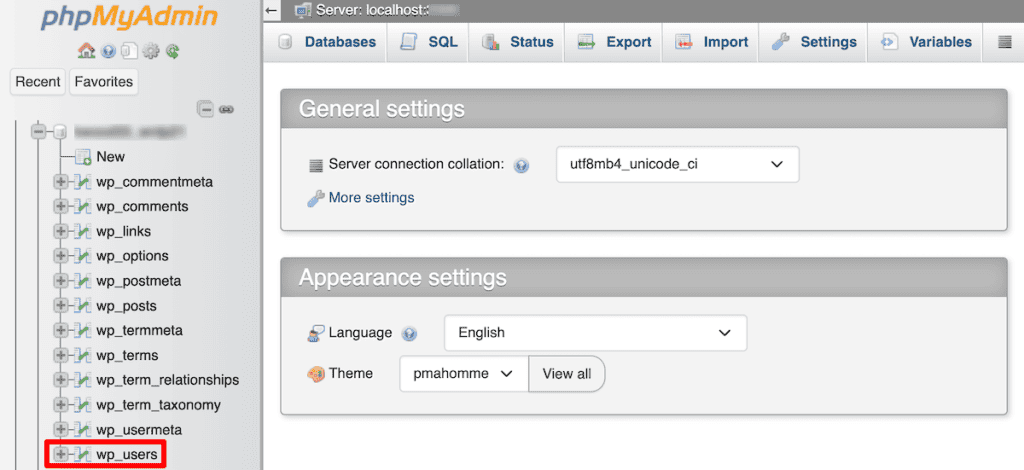
Once you open that, it’ll show you a list of users, usernames, and the associated email address. All you have to do is take note of the username or email address.

Then, you can reset your password using the same approach as above. Note that the password you’ll find here isn’t the actual password, but instead an encrypted version of the password, so it can’t be used to login.
You Can’t Find Your WordPress Login Page
If you’ve tried all of the URL combinations in an earlier step and you can’t reach your WordPress login page, then this issue could be related to a WordPress security plugin.
There are certain WordPress security plugins that mask your WordPress login URL. This makes it more difficult for hackers to attempt a brute-force attack to access your website. We actually recommend limiting the number of login attempts to improve security over hiding your URL (more on this below).
Also, if you’re using SupportHost WordPress hosting, the number of login attempts is limited automatically.
Now, back to fixing your login issue.
To find your login URL, you’ll need to access your website via FTP using a tool like FileZilla or cPanel and then open up the WordPress plugin folder that’ll have a string like “/public_html/wp-content/plugins”.

Then, all you need to do is find the plugin folder and rename it to deactivate the plugin. Next, you can try to login to your website via “example.com/wp-admin” or one of the other URL strings shown above. To use the plugin again, all you need to do is rename the plugin folder to the original name.
If you’re able to login to your WordPress dashboard, then make sure that you change the plugin settings so the WordPress login URL isn’t hidden or it’s changed to a different URL you can remember or bookmark.
Note that if this doesn’t solve the issue, there could be a restriction in place with your host. If there’s suspicious activity on your website or it’s undergoing site maintenance, then the login page could be disabled temporarily. You can get in touch with customer support if you believe this is the issue.
You’re Stuck in a WordPress Login Redirect Loop
In some cases, you can access the login page, but instead of being taken to your website dashboard, you’re stuck in a loop that takes you back to the login screen. To fix this, try one of the solutions below:
- Clear your browser cookies and cache. By clearing any outdated data or cookies, this can potentially fix the problem.
- Plugin redirect issues. A new or recently updated plugin could be causing redirect issues. To fix this, you’ll need to connect to your site via FTP or cPanel and deactivate each plugin until you’ve found the one causing the issue.
- Mismatched URLs in your WordPress database. To fix this you’ll need to open up “phpMyAdmin” and locate the “wp_options” table for your website. Then, make sure the “siteurl” and “home” have the same values.
How to Improve Your WordPress Login Page Security
Once you’ve mastered being able to login to your WordPress site, it’s important to take proactive steps to improve the security of your WordPress login page.
If you’re using SupportHost, then there are already some security measures in place. For example, your site firewall comes equipped with an intrusion detection system that will automatically block IP addresses that are trying to brute-force attack your login page.
With that said, here are some best practices for further enhancing the security of your login screen:
- Choose a strong and unique user name. If you’re using the standard username “admin” for your account, then you should change this right away. Also, make sure your username is different from your author name that’s shown publicaly on your blog posts. You can also create a separate user account with fewer permissions that you use to post on your site.
- Choose a strong password. Your password should be long, complex, and unique. You can use a tool like LastPass or 1Password to generate and store your stored passwords. Make sure you change your passwords on a consistent basis as well.
- Use two-factor authentication. This adds another layer of security to protect your login screen. Two-factor authentication can be tedious, but it’s an extra layer of security that’s hard to penetrate. You can use MiniOrange Google Authenticator plugin to add this feature to your site.
- Automatically log off inactive users. Logged-in users no longer using your site can pose a security risk. You can use a plugin like Inactive Logout, which will create an active login message for users and let you set a maximum inactivity time when users will be logged out.
For even more security tips, check out our detailed guide on WordPress security.
WordPress Login FAQs
How do I log into my WordPress.org site?
To login to your WordPres site, go to your browser’s address bar and type in “/wp-admin” at the end of your domain name. For example, “yoursite.com/wp-admin”. Then type in your username and password.
Why can’t I log in to my WordPress site?
Some of the main reasons you can’t login to your WordPress site are your login credentials are incorrect, a WordPress security plugin is blocking you, you changed your WordPress login page URL, or you’re being blocked because of suspicious activity on your site, or it undergoing routine maintenance.
What is the URL for WordPress admin?
The most common URL for the WordPress admin is “yoursite.com/wp-admin”. However, it can also be a variation of “yoursite.com/login”, “yoursite.com/admin”, or “yoursite.com/wp-login”.
What is the default login for WordPress?
The default login for WordPress is “admin” if another username isn’t chosen during the installation process. This is the default username that is assigned when a new WordPress installation is created. However, to improve your site security, it’s recommended that you change this as soon as possible.
Closing Thoughts: Mastering Your WordPress Login
Hopefully, you have a better understanding of how you can login to WordPress. As you’ve seen, it’s generally pretty easy to log in; however, there are issues that can pop up that make logging into your website difficult.
The two main ways you’ll login to your WordPress site are via the WordPress login URL and via your hosting provider if it supports cPanel. There are also a few ways you can troubleshoot your login if the two methods above don’t work.
Now, over to you. Have you had to login to your WordPress site using an alternative method? Please share your thoughts in the comments below.



Leave a Reply